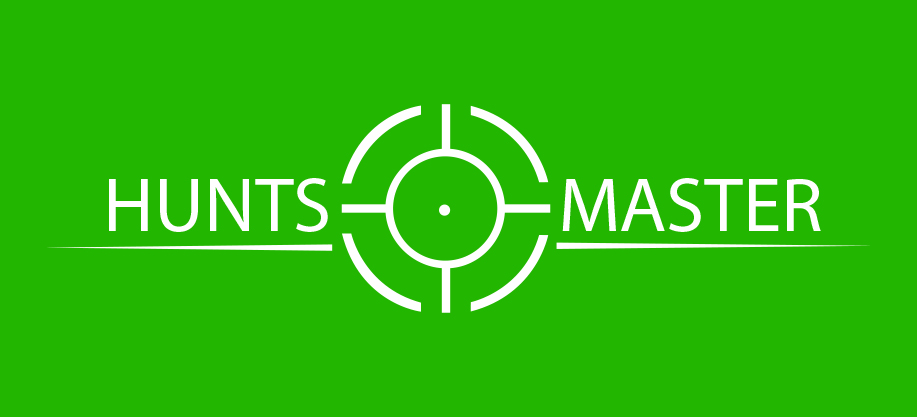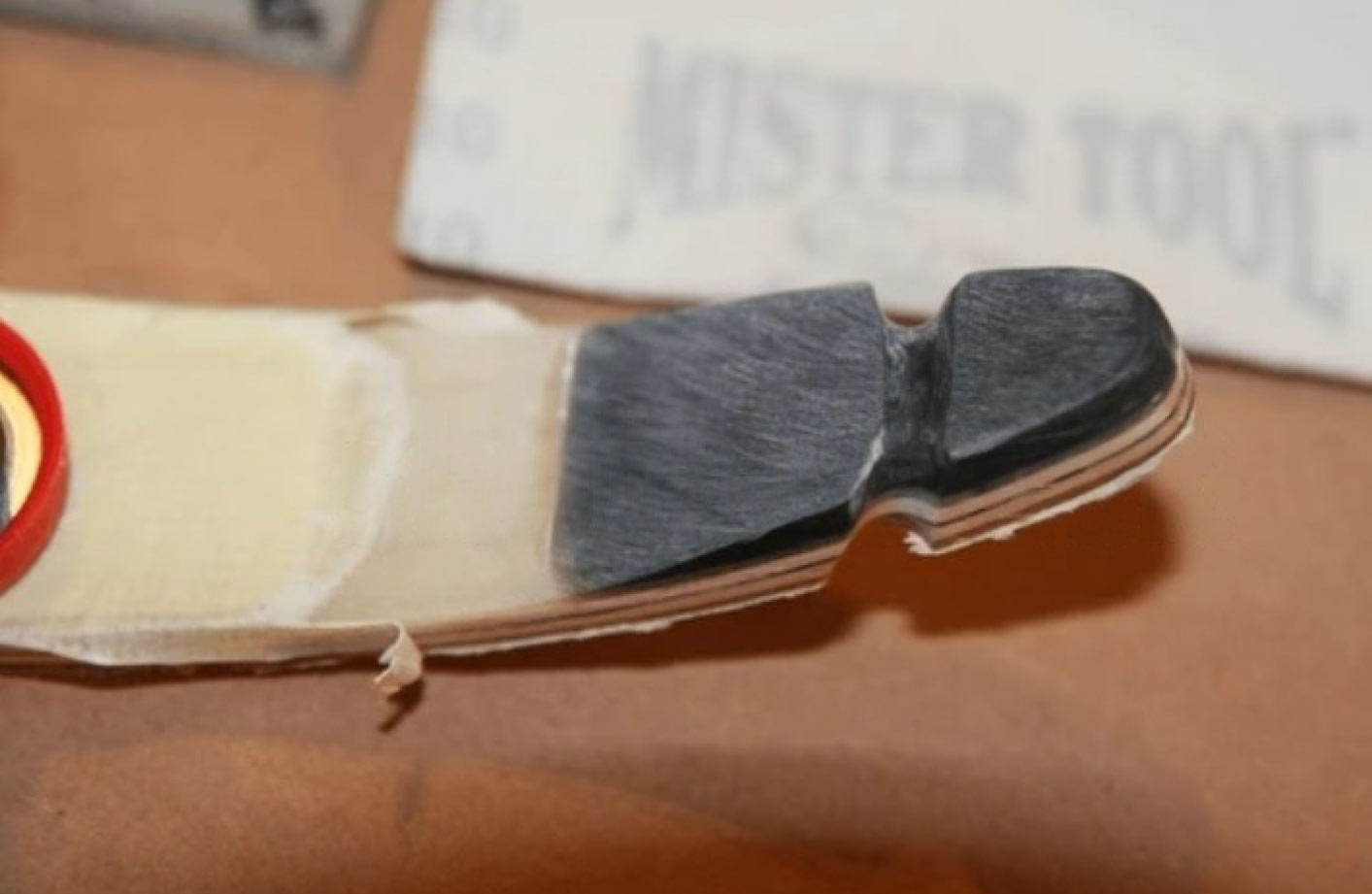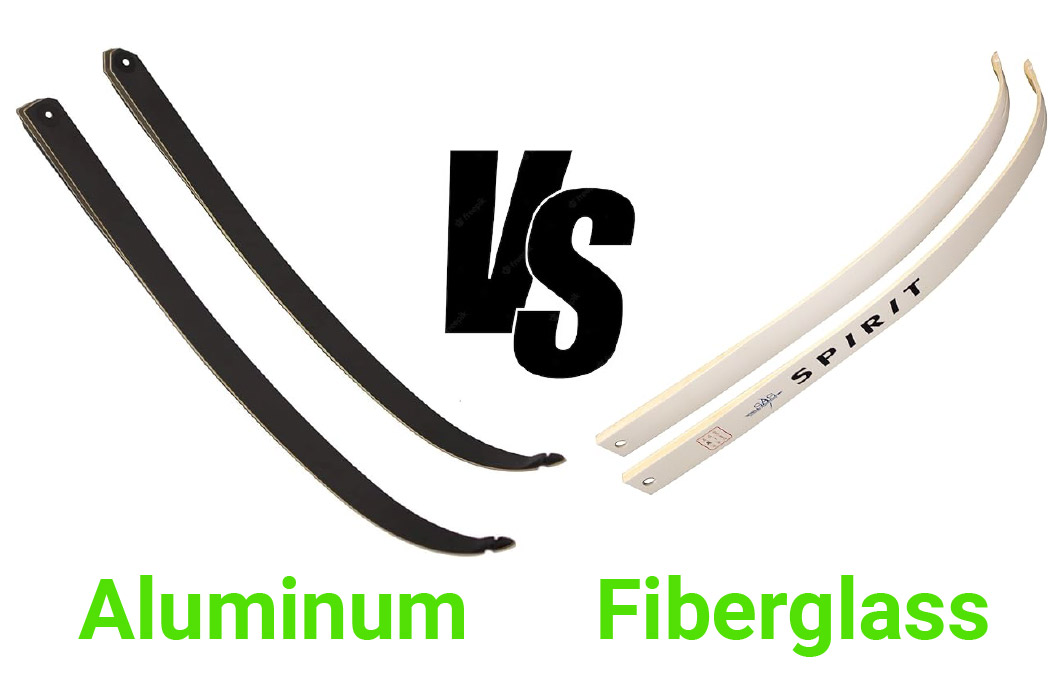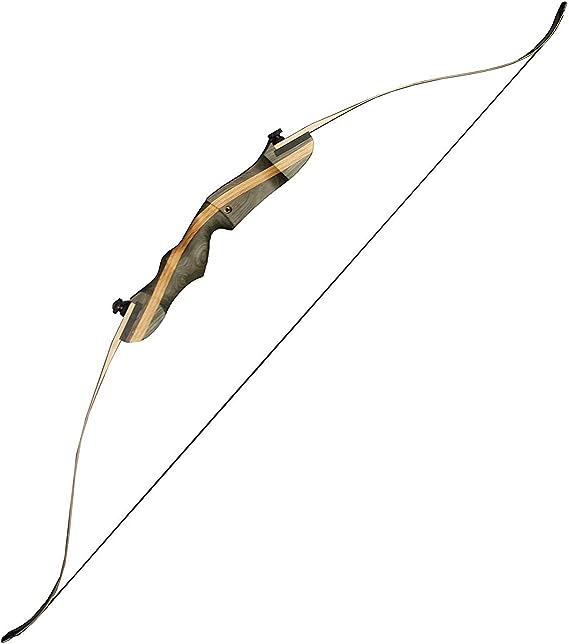Our guide to recurve bow aiming: As a bow hunter, mastering your shot is essential for success in the field.
We’ll cover the basics of aiming, explore sight aids that can improve your accuracy, provide tips for practicing your aim, and address common aiming issues you may encounter.
Whether you’re a beginner or an experienced archer looking to fine-tune your skills, we’ve got you covered.
Let’s dive in and take your shooting game to the next level!
Understanding The Basics of Aiming

Aiming accurately is a crucial skill for beginners learning how to shoot a bow. To improve your aim, focus on three key elements: grip and stance, aligning your dominant eye, and finding your anchor point.
By mastering these basics of aiming, you’ll be well on your way to hitting the target with precision and confidence. So grab your bow and let’s dive in!
Grip and Stance
Proper hand placement on the bow grip is crucial for accurate aiming. Beginners should position their hands in a relaxed and comfortable manner, ensuring that the fingers wrap around the grip securely.
Balancing your body weight is essential to maintaining stability while shooting. By distributing your weight evenly between both feet, you can achieve better control over the bow and arrow.
Positioning your feet correctly completes the foundation of a solid stance, with one foot slightly ahead of the other to maintain balance and support proper posture during each shot.
Aligning Your Dominant Eye
Determining your dominant eye is crucial for accurate aiming when using the best recurve bow. One way to do this is by extending both arms forward and forming a triangle with your thumbs and index fingers.
Focus on an object in the distance, then close one eye at a time. Whichever eye keeps the object centered within the triangle is your dominant eye. To ensure precision, consider using an eye patch or blinder to block your non-dominant eye while shooting.
Lastly, always make sure you have a clear line of sight between your dominant eye and the target before releasing the arrow.
Finding Your Anchor Point
Identifying the anchor point on your face is crucial for accurate aiming with a recurve bow. Beginners should experiment with different anchor points to find one that provides comfort and consistency.
By developing muscle memory, you can ensure consistent placement of your anchor point, resulting in more consistent shots.
Experimenting with different anchor points allows you to find the one that feels most natural and comfortable for you as an individual.
This will not only improve your overall shooting experience but also contribute to more accurate aim when using a recurve bow.
Once you have found your preferred anchor point, focus on developing muscle memory through practice and repetition, ensuring that each shot consistently hits its mark.
Practicing Your Aim
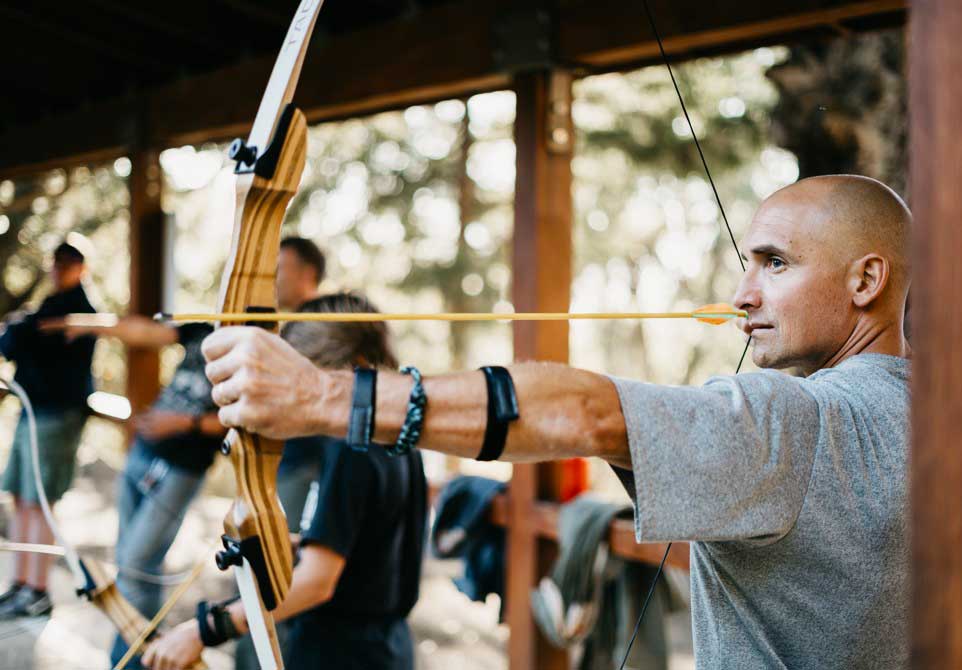

1. Fine-tune your aim with target practice drills. Mix up the distances and angles to challenge yourself and simulate real hunting situations. Remember, consistent practice leads to better accuracy.
2. Focus on maintaining proper form and consistency in every shot. Pay attention to your grip, anchor point, and follow-through. By mastering these fundamentals, you’ll have greater control over where your arrow lands.
Target practice drills:
1. Experiment with shooting at different distances—start close and gradually move farther away.
2. Incorporate obstacles or natural features into your training setup for a more realistic experience.
Focusing on consistency and form
1. Focus on keeping a steady hand during the draw by using back tension rather than muscle strength alone.
2. Work on maintaining a consistent anchor point for each shot; this will help improve your aim over time.
Becoming skilled with a recurve bow takes dedication and practice! Keep honing your skills through regular target practice sessions while focusing on form consistency for improved accuracy in the field!
Target Practice Drills
Setting up a target range is crucial for improving your aim with a beginner recurve bow. Find an open space with a safe backdrop, like a field or an empty lot, to set up your targets. Make sure the range is free from any obstructions that may interfere with your shots.
Practicing at different distances will help you become more versatile and accurate in various hunting situations.
Start by shooting at relatively close distances, gradually increasing the distance as you gain confidence and consistency in your shot.
This will enhance your ability to adjust for varying conditions and improve accuracy over long distances.
Incorporating shooting games into your target practice drills adds an element of fun while sharpening your skills. Try playing “Hunters vs. Prey,” where one person acts as the prey while others take turns trying to hit them within a time limit.
Another game idea is the “Bullseye Challenge,” where participants compete to see who can consistently hit closest to the center of the target.
These games not only make practice enjoyable but also simulate real-life hunting scenarios, enhancing focus and precision.
Focusing on Consistency and Form
Mastering your stance and posture is crucial for improving your aim with a recurve bow. Stand with your feet shoulder-width apart, perpendicular to the target, and maintain a relaxed yet balanced position. Proper hand placement on the bowstring is another key element to focus on.
Ensure that you consistently anchor your fingers in the same spot on the string every time you draw back, which helps establish muscle memory.
Implementing consistent anchor points completes this trio of essentials for better aiming.
- Mastering your stance and posture
- Proper hand placement on the bowstring
- Implementing consistent anchor points
Dealing With Common Recurve Bow Aiming Issues


When it comes to recurve bow aiming, common issues can arise. One issue is bowing arm torque. To prevent this, focus on keeping your bow grip relaxed and consistent throughout the shot.
Another common issue is canting the bow. Make sure to align the string with your dominant eye and keep the riser perpendicular to the ground for accurate aim.
Lastly, target panic can affect your accuracy. Combat this by focusing on your form and executing a smooth release without rushing or hesitating.
Bowing Arm Torque
Proper grip and hand placement are crucial for minimizing bowing arm torque. Ensure that your fingers wrap around the riser in a relaxed and natural manner, with the thumb resting lightly against it.
This allows for better control and reduces any unnecessary twisting or tension in your bow arm.
Maintaining a relaxed bow arm is key to achieving an accurate shot. Avoid gripping the bow too tightly or locking your elbow, as this can lead to muscle strain and affect your aim.
Instead, focus on keeping a fluid motion throughout your draw, allowing the bow to settle naturally into position.
Excessive muscle tension in the bowing arm should be avoided at all costs. When you’re tense, it becomes difficult to execute precise movements smoothly.
To counter this, consciously relax your muscles while drawing back the string, ensuring that only minimal force is required to hold it steady before releasing.
Canting The Bow
Understanding canting and its effects on aim is crucial for mastering your shot with a recurve bow. Experimenting with different degrees of cant can help you find the perfect balance that suits your shooting style. By adjusting the tilt of the bow, you can fine-tune your accuracy and improve your overall performance in bow hunting.
Target Panic
Identifying symptoms of target panic can be a crucial step in improving your shooting accuracy. Pay attention to signs such as flinching, jerking the release, or rushing the shot.
By recognizing these behaviors, you can address them and work towards overcoming target panic.
To calm your nerves while aiming, practicing proper breathing techniques is essential. Take slow and deep breaths before each shot to relax your body and mind.
Breaking down the shot process into smaller steps can significantly decrease the anxiety associated with target panic.
By focusing on one step at a time—from nocking the arrow to releasing it—you can build confidence and maintain control throughout each stage of shooting.
Tips for Recurve Bow Aiming Properly
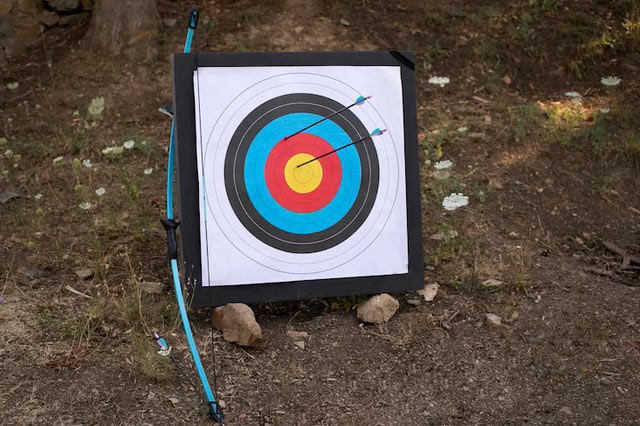

The first step in proper recurve bow aiming is to ensure that the arrow is properly nocked on the bow string. Once you have the arrow nocked, take a few moments to get into the correct position.
Your feet should be shoulder-width apart, and your hips should be slightly higher than your shoulders. Gently draw the bow back until your knuckles are nearly touching your face.
Focus on a single spot in the distance, and align your body so that the arrow is pointing directly at that spot.
When you are ready to shoot, keep your head still and your breathing steady. Focus on the spot you have chosen and release the arrow.
Factors That Affect Recurve Bow Aiming
Aiming a recurve bow properly requires a lot of practice and skill. One of the most important things to consider when aiming a recurve bow is the position of the bow body. It is important to keep the bow body in line with the target and your draw arm.
This will ensure that the arrow is released on the correct path. The other factor to consider is the draw length. The draw length should be adjusted so that the draw hand is in line with the target.
Finally, the archer should focus on the target and take slow, deep breaths to steady the aim. With practice and dedication, the archer will soon be able to master the art of aiming a recurve bow.
Gap Shooting Technique
Gap shooting is a way to aim a recurve bow. You figure out how far away the target is and then aim above or below it to make up for the arrow drop. Gap shooting is especially useful when shooting at targets of varying distances. To use the gap shooting technique, you will need to:
Estimating Distance
The first step in gap shooting is to estimate the distance to the target. There are several methods for estimating distance, but the most common is to use a rangefinder or your own knowledge of the area and the target.
To use the rangefinder, simply point it at the target and read the distance measurement. If you don’t have a rangefinder, you can estimate the distance by looking at the size of the target and how often you’ve shot at similar targets.
It is important to note that estimating distance takes practice and can be challenging, so it’s a good idea to practice this skill regularly.
Adjusting for Elevation
Once you know how far away the target is, you’ll need to change your aim to account for the arrow’s fall. To do this, you will need to know the trajectory of your arrows, which can vary based on the bow, the arrow, and the draw weight.
To adjust for elevation, you will need to aim above or below the target, depending on the distance.
For example, if the target is 20 yards away, you may need to aim 2-3 inches above the target to account for the arrow drop. If the target is 30 yards away, you may need to aim 5–6 inches above the target.
It is important to note that the amount of adjustment needed will vary based on the arrow speed, the arrow weight, and the bow setup.
Therefore, it’s a good idea to practice this technique regularly and to adjust your aim based on the results of your practice.
Adjusting for Windage
Wind can also affect the trajectory of your arrows, which can make it challenging to hit your target. To adjust for windage, you will need to estimate the direction and strength of the wind and then adjust your aim accordingly.
If the wind is blowing from left to right, for example, you may need to aim to the left of the target to compensate for the wind drift. If the wind is blowing from right to left, you may need to aim to the right of the target.
It’s important to note that wind conditions can change quickly, so you will need to adjust your aim accordingly.
Common Mistakes In Recurve Bow Aiming
Aiming a recurve bow is a technique that requires repetition, concentration, and attention to detail. Although it may seem simple, there are typical aiming mistakes archers can make that can reduce accuracy and consistency.
We’ll go over some of these typical mistakes and give tips on how you can avoid them. Let’s take a closer look at the typical mistakes you should watch out for and discover effective solutions.
Improper Stance
A proper stance is critical to aiming a recurve bow accurately. Common mistakes include having the feet too close together, unevenly distributing weight, or not standing perpendicular to the target.
These mistakes can negatively affect balance and stability, making it more difficult to aim accurately.
Improper Grip
A proper grip is also essential for aiming a recurve bow accurately. Common mistakes include gripping the bow too tightly, not placing the thumb behind the bow grip, or allowing the hand to move during the release.
These mistakes can lead to inconsistencies in the shot, making it difficult to hit the target consistently.
Poor Anchor Point
An anchor point is a point at which the string touches the face during the draw. Not having a consistent anchor point is a common mistake that can lead to shots that are not the same. The anchor point should be easy to use, consistent, and always in the same place.
Poor sight alignment
Proper sight alignment is critical for consistent aim. Common mistakes include not aligning the string with the bow sight, not keeping the sight pin centered on the target, or tilting the bow. These mistakes can cause the arrow to veer off course and miss the target.
Overcompensating for Wind
Wind can affect the trajectory of the arrow, but overcompensating for it can lead to inconsistent shots. Some common mistakes are overcompensating for the wind, not getting the direction of the wind right, or not adjusting at all for the wind.
Rushing the Shot
Aiming a recurve bow requires patience and focus. Common mistakes include rushing the shot, not taking the time to properly aim, or not fully drawing the bowstring. These mistakes can lead to inaccurate shots and frustration.
Lack of practice
Proper aim requires practice, and not practicing regularly can lead to inconsistent shots. Common mistakes include not practicing enough, not practicing in different conditions, or not seeking feedback from experienced archers.
How Can I Hold The Bow Correctly When Aiming?
Proper recurve bow aiming is essential to ensuring accuracy and consistency when shooting. Here are some steps to help you aim your recurve bow properly.
Firstly, make sure your draw hand is slightly higher than your bow hand. Grip the bowstring with your draw hand, thumb pointing down. Place the index finger of your right hand above the arrow and the middle and ring fingers below.
Next, keep your bow arm slightly bent and your shoulders square with the target. Keep your draw arm straight and aim with your draw eye. Ensure that your bow is pointed at the target, not the ground.
Finally, pull the string slowly back, keeping your bow arm and drawing arm in line with the target.
This will help you maintain accuracy and consistency with each shot. With these steps, you will be able to properly aim your recurve bow and hit the target every time.
What Is The Difference Between Sighting and Recurve Bow Aiming?
Anyone who wants to be a good archer needs to know how to aim a recurve bow properly. Sighting and aiming are two important steps that must be taken in order to hit the target.
Sighting is the process of aligning the bow and the target, while aiming is the process of adjusting the path of the arrow to hit the target.
For sighting, you need a sighting device like a peep sight or a sight mark, but for aiming, you don’t need anything else.
Sighting is the first step in aiming a recurve bow, as it sets the foundation for the aiming process.
After getting a good look at the target, the archer must use muscle memory and be aware of where the arrow is going to hit the target.
When sighting and aiming a recurve bow, it is important to keep the bow steady and use a consistent anchor point. This will help ensure that the archer is able to make accurate shots.
With practice and patience, any archer can learn how to sight and aim a recurve bow properly. With proper technique and a steady hand, it is possible to hit the target with accuracy and consistency.
What is The Correct Stance for Aiming a Recurve Bow?
Having the correct stance is crucial. The first thing you need to do is stand with your feet shoulder-width apart, perpendicular to the target.
Your body should be facing the target directly, with your torso straight and your weight evenly distributed between both feet.
Next, place your bow hand out in front of you, with your elbow slightly bent and your wrist straight.
The bowstring should be held with your other hand, with your fingers curled around it and your thumb resting lightly on the back of your hand.
Finally, bring the bow up to your face, with the string just below your chin. Your head should be slightly tilted, with your dominant eye looking straight down the arrow.
Take a deep breath, relax your shoulder blades, and focus on your target. When you’re ready, release the arrow and follow through with your shot.
How Should I Adjust My Grip When Recurve Bow Aiming?
Your grip plays an important role in achieving accuracy and consistency. To adjust your grip, start by placing your hand on the bow grip in a relaxed, natural position. Your fingers should curl around the grip without being too tight or too loose.
Next, make sure that your hand is in the same position on the grip each time you shoot. This will help you maintain consistency and make it easier to adjust your aim if necessary.
You can do this by marking the spot where your hand should be on the grip with a small piece of tape or a marker.
Another important factor to consider is the placement of your fingers on the bowstring. With a recurve bow, it’s generally recommended to use a three-finger under grip, where the index, middle, and ring fingers are placed beneath the arrow on the bowstring. This grip allows for a smoother release and better accuracy.
Finally, practice is key when it comes to adjusting your grip and perfecting your aim. Experiment with different hand positions and finger placements to find what works best for you, and be patient as you work to improve your form and technique. With time and practice, you’ll be hitting your targets with ease!
Recurve Bow Aiming: How Can I Adjust My Anchor Point?
Find your current anchor point:
First, you need to establish your current anchor point. This is the point where you consistently draw the bowstring back when aiming. Your anchor point should be the same every time you shoot.
Adjust your hand position:
If you need to change your anchor point, start by adjusting your hand position on the bowstring.
Move your hand up or down on the string until you find a comfortable and consistent anchor point. Remember, you want your anchor point to be the same every time you shoot.
Check your draw length:
Your anchor point is closely related to your draw length. If you need to change your anchor point, you may need to adjust your draw length as well.
This can be done by adjusting the length of your bowstring or the position of your bowstring on your bow.
Practice, practice, practice:
Once you’ve found a new anchor point, it’s important to practice until it becomes second nature. The more you practice, the more consistent your anchor point will become and the more accurate your shots will be.
Adjusting your anchor point can take some trial and error, but with patience and practice, you’ll find the perfect anchor point for your shooting style. Happy shooting!
How Should I Aim a Recurve Bow for Long-Distance Shooting?
When it comes to long-distance shooting with a recurve bow, there are a few things to keep in mind.
Firstly, make sure that you have a good understanding of your bow’s capabilities and limitations. This means knowing the maximum distance you can shoot accurately and reliably.
Next, when aiming a recurve bow for long-distance shooting, it’s important to have a consistent anchor point.
This means finding a spot on your face—like the corner of your mouth or your cheekbone—that you can comfortably and consistently touch your bowstring to each time you shoot.
When it comes to aiming at longer distances, you’ll need to adjust your sight picture. This means either aiming higher or lower, depending on the distance and angle of your target.
One way to do this is to use a sight pin or a sight tape, which can be adjusted for different distances.
Finally, practice, practice, practice. Long-distance shooting with a recurve bow takes skill and experience, so the more you practice, the better you’ll get.
Experiment with different techniques and tools, and don’t be afraid to ask more experienced archers for advice and tips.
Conclusion
Recurve bow aiming is a fundamental skill for any archer seeking accuracy and precision in their shots. This skill encompasses proper setup, stance, drawing technique, anchoring, and focusing on the target.
To aim a recurve bow, first ensure you have a comfortable, stable stance. Next, draw the bow string back to your anchor point and aim at your target. Aim with both eyes open and focus on the spot you want to hit.
Keep the arrow parallel to the bow and the bow parallel to the ground. Once you are confident in your aim, release the bowstring and follow through with your shot.
To become proficient at recurve bow aiming, one must practice consistently, maintain a stable anchor point, and pay attention to common mistakes that can hinder accuracy.
By understanding and refining these aspects, archers can steadily improve their accuracy and become more successful in hitting their targets with a recurve bow.
Frequently Asked Questions
What are the two primary aiming techniques for recurve bows?
Instinctive aiming and sight aiming are the two main techniques used for aiming a recurve bow.
How do I choose the right equipment for aiming a recurve bow?
Consult an archery professional or coach to help you select the appropriate bow size, draw weight, and arrows for your skill level and physical abilities.
What is the proper stance for aiming a recurve bow?
Stand with your feet shoulder-width apart, perpendicular to the target, and maintain a straight back and relaxed shoulders while facing the target.
What is the best way to release the arrow?
Relax your fingers and let the bowstring slip out of your grasp while maintaining your posture. Follow through with your shot for optimal accuracy.
How do I adjust my anchor point?
You can adjust your anchor point by changing the position of your bowstring on your bow or adjusting the length of your bowstring.
What should I keep in mind when aiming a recurve bow for long-distance shooting?
Make sure you know your bow’s capabilities and limitations, have a consistent anchor point, adjust your sight picture, and factor in the wind.
What is the dominant eye, and why does it matter in recurve bow aiming?
The dominant eye is the one that your brain relies on more for visual input. In archery, it’s important to use your dominant eye to aim because it helps with accuracy by ensuring your focus is aligned correctly with the target.
What is gap shooting, and how does it relate to recurve bow aiming?
Gap shooting is a technique where archers estimate the distance to the target and aim above or below it to compensate for arrow drop.
Is there a specific sight or aiming device I can use with a recurve bow?
While recurve bows are typically more traditional and lack sights, some archers use basic sight pins or markings on the bow to help with aiming.
